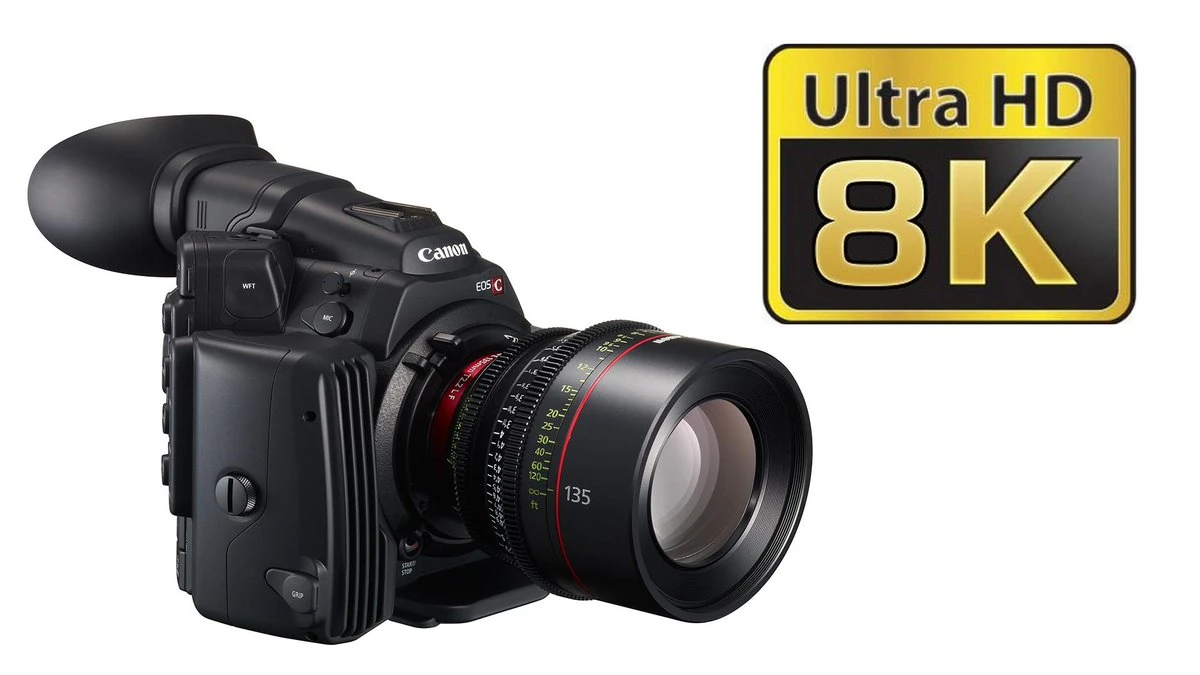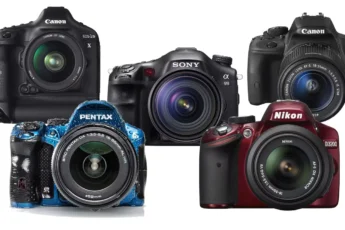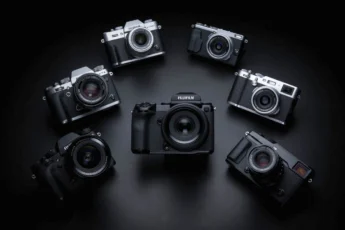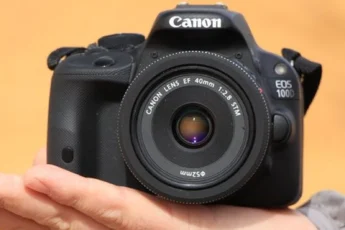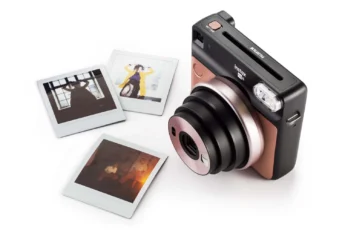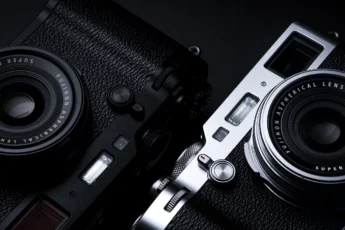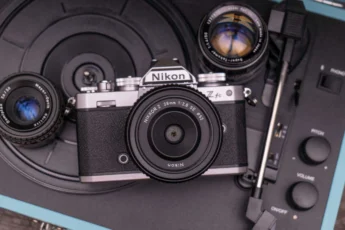In the ever-evolving world of digital imaging, 8K video technology has emerged as a game-changer, delivering unparalleled levels of detail and clarity. With four times the resolution of 4K, 8K cameras offer filmmakers, photographers, and content creators the ability to capture breathtaking visuals that bring their creative visions to life. As the demand for high-resolution content continues to grow across various industries, from film production to virtual reality experiences, understanding the capabilities and potential applications of 8K cameras becomes increasingly important.
In this comprehensive guide, we’ll explore the world of 8K cameras, delving into their technical specifications, unique features, and the factors to consider when choosing the right camera for your needs. Whether you’re a professional filmmaker, a wildlife photographer, or an enthusiast looking to future-proof your content, this blog post will provide you with valuable insights and recommendations to help you make an informed decision.
- Overview of 8K Cameras in 2024
- Importance of Choosing the Right Camera
- Best 8K Cameras in 2024
- Nikon Z9
- Sony A1
- Fujifilm X-H2
- Canon EOS R5
- Sony A7R V
- Kandao QooCam 8K 360
- Panasonic Lumix BS1H
- Canon EOS R3
- Cost of 8K Cameras
- Price Range for 8K Cameras
- Affordability and Accessibility
- Comparison: 8K vs. 4K Cameras
- Resolution Differences
- Image Quality Comparison
- High-Resolution Video Cameras Beyond 4K
- Features and Benefits
- Advantages of 8K and 6K Cameras
- Conclusion
Overview of 8K Cameras in 2024
In 2024, 8K cameras have found their way into various industries, revolutionizing the way we capture and experience visual content. Filmmakers and cinematographers have embraced 8K cameras for their ability to deliver stunning, cinematic visuals with incredible depth and clarity. Broadcasters have begun adopting 8K technology to provide viewers with an immersive and lifelike viewing experience, particularly for live events and sports coverage. Scientific researchers have also recognized the potential of 8K cameras in fields such as medical imaging, astronomy, and environmental monitoring, where the high resolution and detail provided by these cameras can reveal previously unseen phenomena and aid in scientific discoveries.
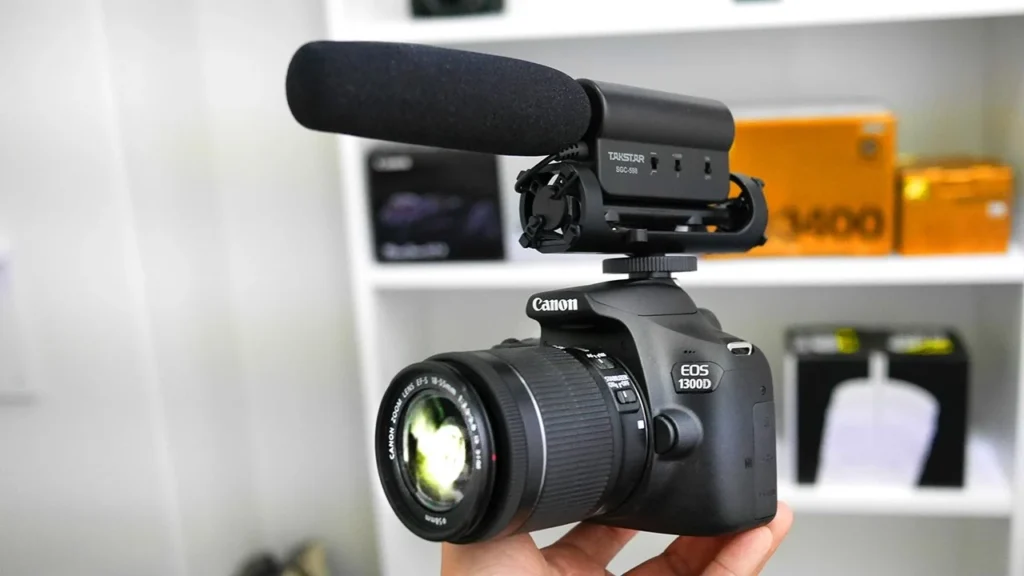
As we explore the best 8K cameras available in 2024, it is essential to understand the key features and specifications that set these cameras apart from their lower-resolution counterparts. From the cutting-edge sensor technology that enables the capture of 8K footage to the advanced image processing engines that ensure optimal color reproduction and dynamic range, these cameras represent the pinnacle of imaging technology. Whether you are a professional filmmaker, a broadcast engineer, or a passionate videographer, understanding the capabilities and potential applications of 8K cameras is crucial in staying ahead of the curve in the rapidly evolving world of digital imaging.
Importance of Choosing the Right Camera
When investing in an 8K camera, it’s crucial to consider your specific needs and the intended use of the camera. Different projects and applications may require unique features and capabilities, making it essential to choose a camera that aligns with your goals and budget. For example, a filmmaker shooting a high-end commercial may prioritize a camera with advanced color science and built-in ND filters, while a wildlife photographer may focus on a camera with fast autofocus and weather sealing.
Additionally, it’s important to consider the ecosystem and lens compatibility of the camera system you choose. Some 8K cameras may have a more extensive selection of native lenses, while others may rely on adapters to use lenses from other manufacturers. The availability of accessories, such as external recorders, battery grips, and monitoring solutions, can also impact your decision, as they can enhance your shooting experience and workflow.
Best 8K Cameras in 2024
Nikon Z9
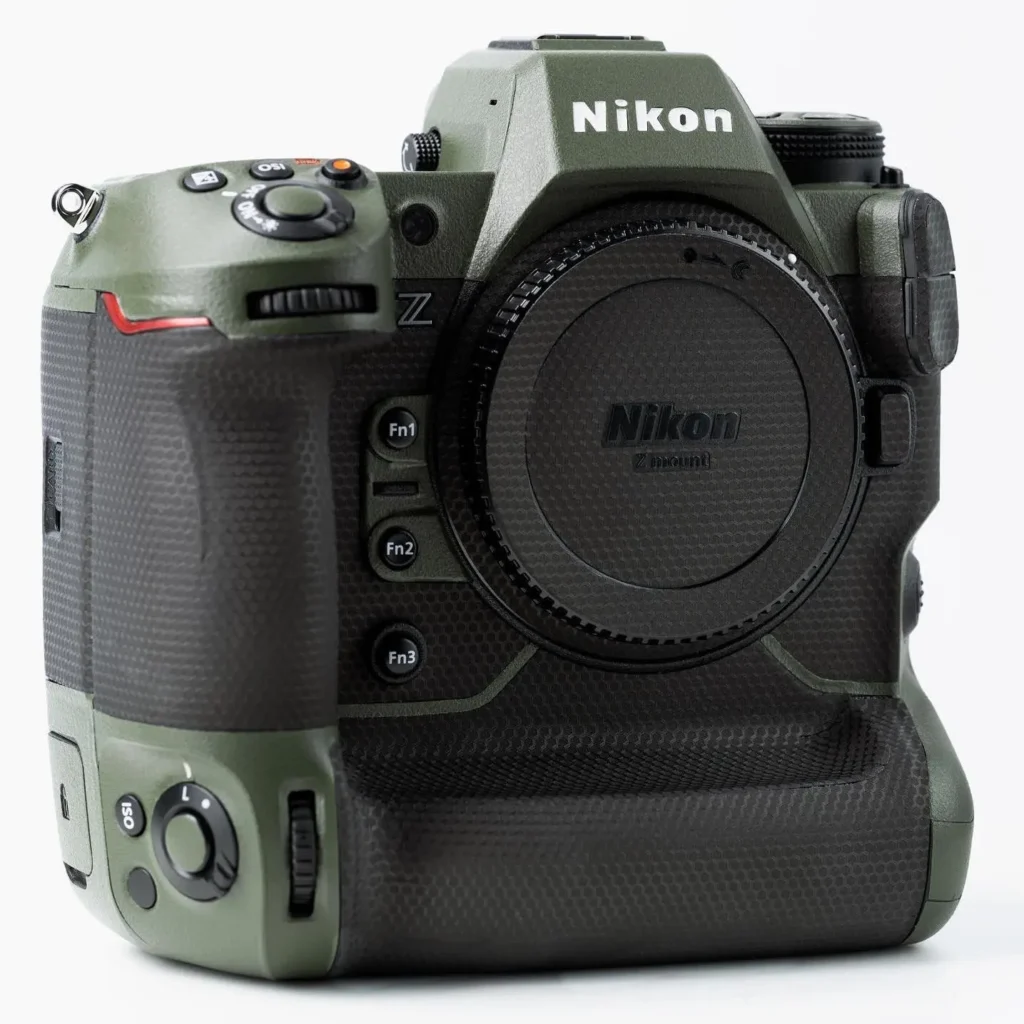
The Nikon Z9 is a powerhouse of an 8K camera, renowned for its incredible speed, high resolution, and professional-grade video capabilities. With its full-frame sensor and advanced image processing engine, the Z9 delivers stunning 8K footage with exceptional detail and clarity. The camera’s lightning-fast autofocus system, coupled with its ability to capture up to 120 frames per second in 8K resolution, makes it an ideal choice for action and sports photography.
One of the standout features of the Nikon Z9 is its impressive low-light performance. The camera’s advanced sensor technology allows it to capture clean and noise-free images even in challenging lighting conditions, making it a versatile tool for a wide range of shooting scenarios. The Z9 also boasts a robust build quality, with weather-sealing and a durable magnesium alloy body that can withstand the rigors of professional use.
Videographers will appreciate the Nikon Z9’s extensive video features, including 10-bit 4:2:2 internal recording, N-Log and HLG (Hybrid Log-Gamma) profiles for greater color grading flexibility, and the ability to output 8K footage via HDMI. The camera’s in-body image stabilization system ensures smooth and stable footage, even when shooting handheld or in challenging conditions.
With its impressive combination of speed, resolution, and video capabilities, the Nikon Z9 has become a favorite among professional photographers and videographers alike, cementing its position as one of the best 8K cameras available in 2024.
Sony A1
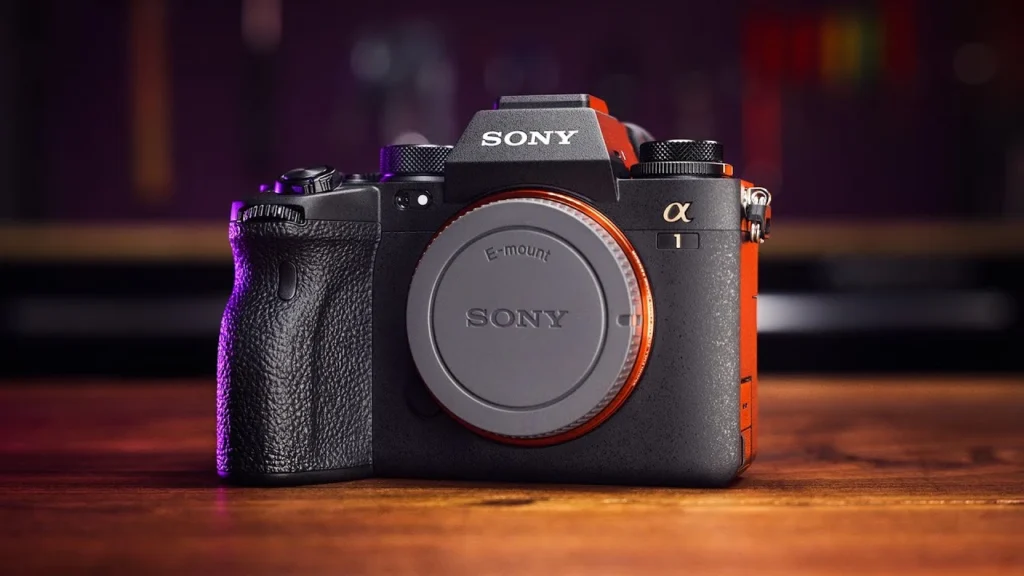
The Sony A1 is another top contender in the 8K camera market, offering a powerful combination of high resolution, speed, and versatility. This full-frame mirrorless camera boasts a 50.1-megapixel sensor that delivers stunning 8K footage with incredible detail and sharpness. The A1’s advanced autofocus system, with its intelligent subject tracking and real-time eye autofocus, ensures that your subjects remain in sharp focus, even in fast-paced and unpredictable shooting situations.
One of the key advantages of the Sony A1 is its impressive continuous shooting speed. The camera can capture up to 30 frames per second in full resolution, making it an ideal choice for sports, wildlife, and action photography. The A1 also features a silent electronic shutter, which allows for discreet shooting in sensitive environments, such as weddings or press conferences.
Videographers will appreciate the Sony A1’s extensive video capabilities, including 10-bit 4:2:2 internal recording, S-Log3 and HLG profiles for greater dynamic range, and the ability to output 8K footage via HDMI. The camera’s 5-axis in-body image stabilization system ensures smooth and stable footage, even when shooting handheld or in challenging conditions.
The Sony A1’s weather-sealed body and durable construction make it a reliable tool for professional photographers and videographers who demand the best performance in any environment. With its impressive combination of resolution, speed, and video capabilities, the Sony A1 has established itself as a top choice for those seeking a versatile and powerful 8K camera in 2024.
Fujifilm X-H2
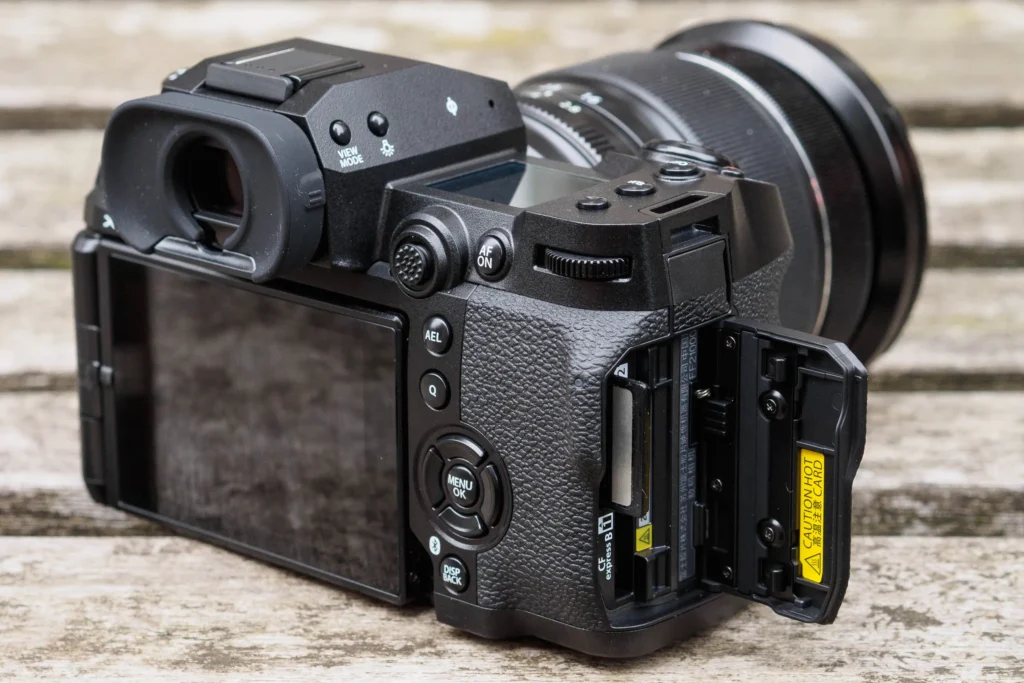
The Fujifilm X-H2 is an affordable and versatile 8K camera that caters to a wide range of users, from enthusiasts to professionals. Equipped with a 26.1-megapixel X-Trans CMOS 5 sensor, the X-H2 delivers stunning 8K footage with Fujifilm’s signature color science and film simulation modes, providing users with a unique and creative visual experience.
One of the standout features of the Fujifilm X-H2 is its compact and lightweight body, which makes it an ideal choice for photographers and videographers who value portability without compromising on image quality. The camera’s advanced autofocus system, with its intelligent subject tracking and face/eye detection, ensures that your subjects remain in sharp focus, even in challenging shooting situations.
The X-H2 offers an impressive range of video capabilities, including 10-bit 4:2:2 internal recording, F-Log and HLG profiles for greater dynamic range, and the ability to output 8K footage via HDMI. The camera’s in-body image stabilization system provides up to 7 stops of compensation, ensuring smooth and stable footage, even when shooting handheld.
With its combination of affordability, versatility, and impressive image quality, the Fujifilm X-H2 has become a popular choice among photographers and videographers looking for a compact and capable 8K camera in 2024.
Canon EOS R5
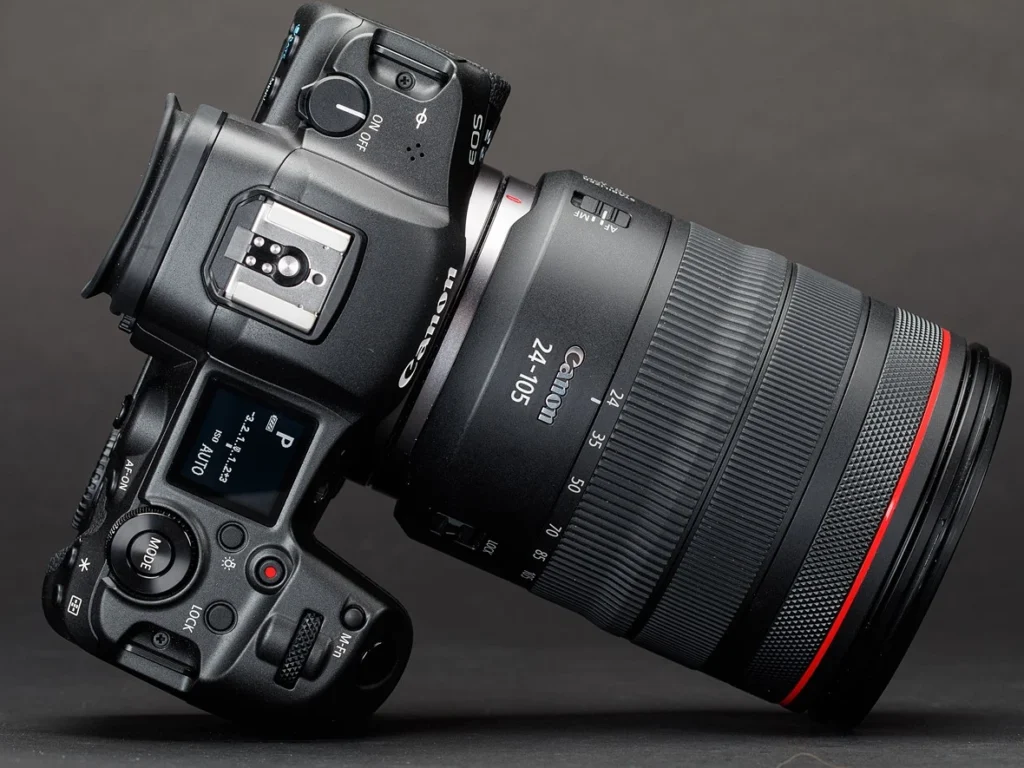
The Canon EOS R5 is a full-frame mirrorless camera that has made waves in the 8K camera market since its release. With its 45-megapixel sensor and advanced DIGIC X image processor, the R5 delivers stunning 8K footage with exceptional detail, color accuracy, and low-light performance.
One of the key features of the Canon EOS R5 is its advanced autofocus system, which boasts an impressive 1,053 autofocus points and intelligent subject tracking, ensuring that your subjects remain in sharp focus throughout your shots. The camera’s in-body image stabilization system provides up to 8 stops of compensation, making it easier to capture smooth and stable footage, even when shooting handheld.
The R5 offers a wide range of video capabilities, including 10-bit 4:2:2 internal recording, Canon Log and HDR PQ profiles for greater dynamic range, and the ability to output 8K footage via HDMI. The camera also features dual memory card slots (CFexpress and SD), providing users with flexibility and peace of mind when shooting important projects.
With its impressive combination of resolution, autofocus performance, and video capabilities, the Canon EOS R5 has become a favorite among professional photographers and videographers looking for a reliable and versatile 8K camera in 2024.
Sony A7R V
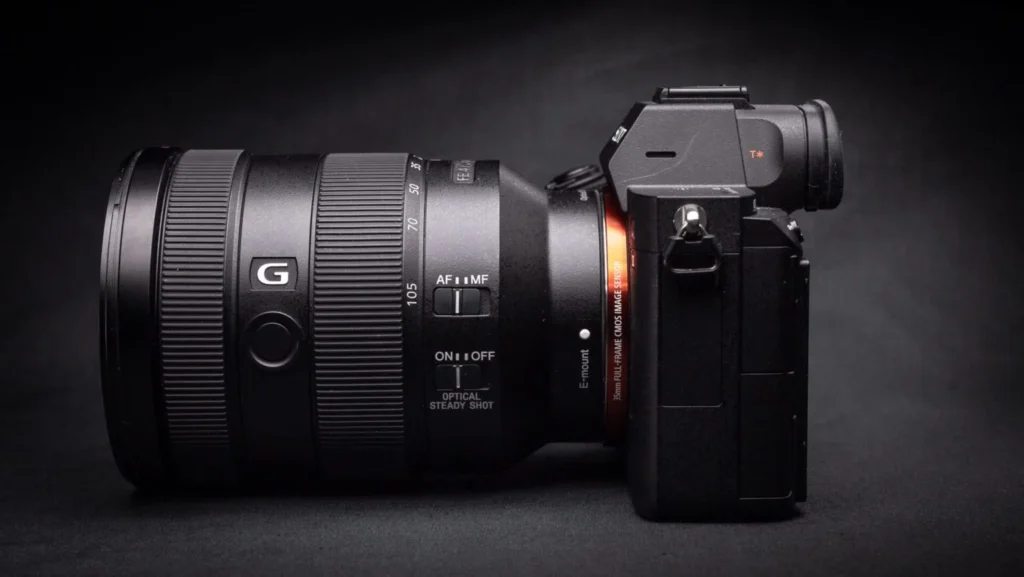
The Sony A7R V is a high-resolution full-frame mirrorless camera that combines exceptional image quality with advanced features and performance. With its 61-megapixel sensor and powerful BIONZ XR image processor, the A7R V delivers stunning 8K footage with incredible detail and clarity.
One of the standout features of the Sony A7R V is its advanced autofocus system, which employs real-time tracking and real-time eye autofocus for both humans and animals, ensuring that your subjects remain in sharp focus, even in challenging shooting situations. The camera’s 5-axis in-body image stabilization system provides up to 8 stops of compensation, allowing you to capture smooth and stable footage, even when shooting handheld.
The A7R V offers a range of video capabilities, including 10-bit 4:2:2 internal recording, S-Log3 and HLG profiles for greater dynamic range,
The A7R V offers a range of video capabilities, including 10-bit 4:2:2 internal recording, S-Log3 and HLG profiles for greater dynamic range, and the ability to output 8K footage via HDMI. The camera’s high-resolution viewfinder and articulating touchscreen display make it easy to compose and review your shots, even in challenging lighting conditions.
With its impressive combination of resolution, autofocus performance, and video capabilities, the Sony A7R V has become a popular choice among photographers and videographers who demand the highest level of image quality and performance from their 8K cameras in 2024.
Kandao QooCam 8K 360
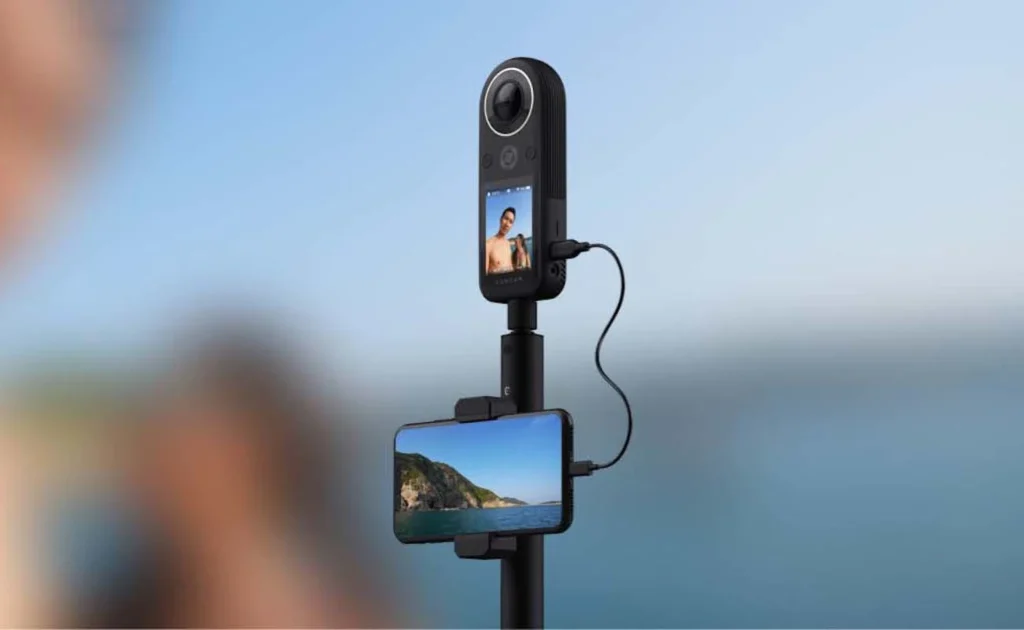
The Kandao QooCam 8K 360 is a unique and innovative camera that offers users the ability to capture immersive 360-degree footage in stunning 8K resolution. With its compact and portable design, the QooCam 8K 360 is an ideal choice for content creators, virtual reality enthusiasts, and professionals looking to explore the creative possibilities of 360-degree video.
Equipped with two fisheye lenses and advanced stitching algorithms, the QooCam 8K 360 delivers seamless and high-quality 360-degree footage with minimal distortion. The camera’s intuitive mobile app and editing software make it easy to preview, edit, and share your 360-degree content, even for users with limited experience in VR content creation.
The Kandao QooCam 8K 360 offers a range of video capabilities, including 10-bit color depth, H.265 encoding for efficient file sizes, and the ability to live-stream 360-degree footage directly to platforms like YouTube and Facebook. The camera’s built-in Wi-Fi and Bluetooth connectivity make it easy to control the device remotely and transfer files wirelessly.
As 360-degree content continues to gain popularity in fields like virtual reality, tourism, and entertainment, the Kandao QooCam 8K 360 has established itself as a capable and user-friendly option for creators looking to explore the potential of 8K 360-degree video in 2024.
Panasonic Lumix BS1H
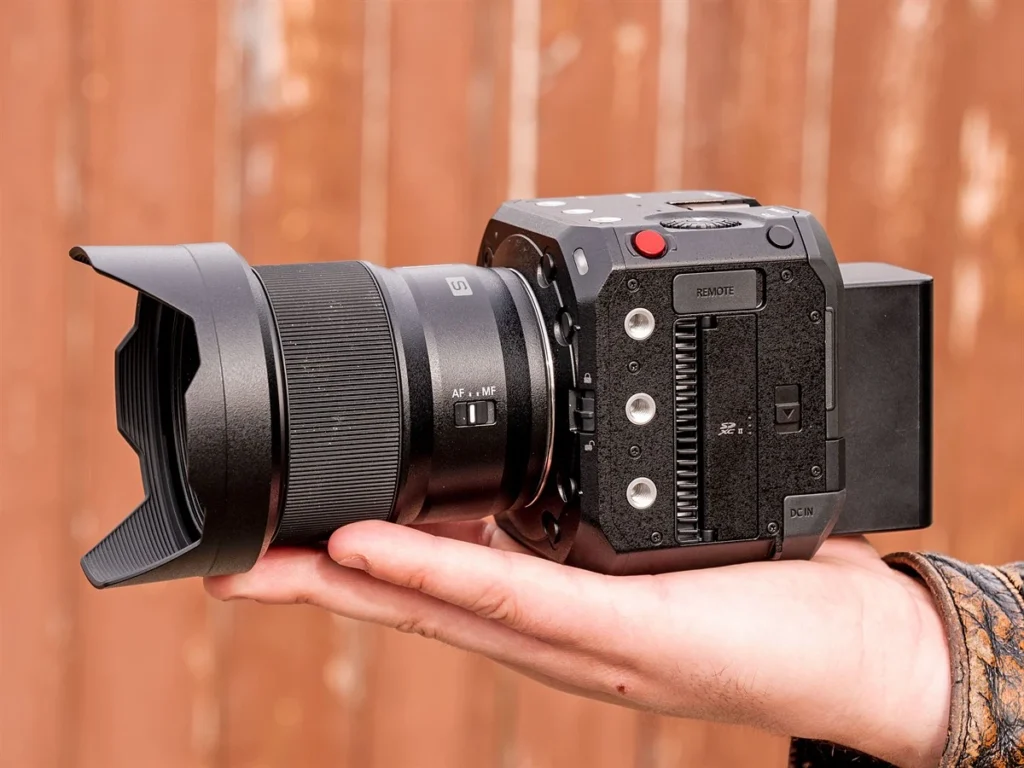
The Panasonic Lumix BS1H is a compact and versatile 8K camera that offers professional-grade performance in a box-style form factor. With its 24.2-megapixel full-frame sensor and advanced Venus Engine image processor, the BS1H delivers stunning 8K footage with impressive detail, color accuracy, and low-light performance.
One of the key advantages of the Panasonic Lumix BS1H is its modular design, which allows users to customize the camera setup according to their specific needs. The camera’s small size and multiple mounting options make it an ideal choice for a wide range of applications, from cinema production to live event broadcasting and remote studio setups.
The BS1H offers an extensive range of video capabilities, including 10-bit 4:2:2 internal recording, V-Log and HLG profiles for greater dynamic range, and the ability to output 8K footage via HDMI. The camera’s advanced autofocus system, with its customizable autofocus settings and focus peaking, ensures that your subjects remain in sharp focus throughout your shots.
With its combination of professional-grade performance, versatility, and compact design, the Panasonic Lumix BS1H has become a favorite among videographers and filmmakers looking for a reliable and adaptable 8K camera solution in 2024.
Canon EOS R3
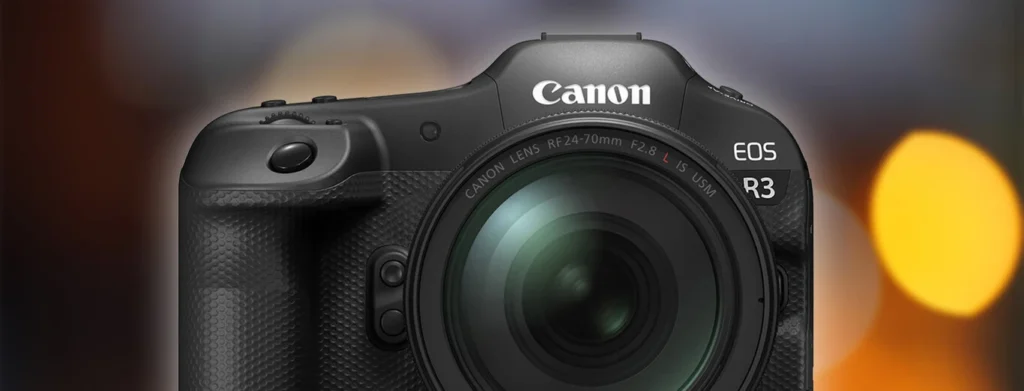
The Canon EOS R3 is a professional-grade mirrorless camera that combines high-speed performance, advanced autofocus capabilities, and 8K video recording in a rugged and weather-sealed body. With its 24.1-megapixel full-frame sensor and powerful DIGIC X image processor, the R3 delivers impressive image quality and video performance, making it an ideal choice for sports, wildlife, and event photographers.
One of the standout features of the Canon EOS R3 is its advanced autofocus system, which boasts an impressive 1,053 autofocus points and intelligent subject tracking, including an innovative Eye Control AF function that allows users to select a focus point simply by looking at it through the viewfinder. The camera’s high-speed continuous shooting capabilities, with up to 30 frames per second in electronic shutter mode, make it an excellent choice for capturing fast-moving subjects.
The R3 offers a range of video capabilities, including 10-bit 4:2:2 internal recording, Canon Log and HDR PQ profiles for greater dynamic range, and the ability to output 8K footage via HDMI. The camera’s in-body image stabilization system provides up to 8 stops of compensation, ensuring smooth and stable footage, even when shooting handheld in challenging conditions.
With its impressive combination of speed, autofocus performance, and 8K video capabilities, the Canon EOS R3 has become a go-to choice for professional photographers and videographers who demand the highest level of performance and reliability from their cameras in 2024.
Cost of 8K Cameras
Price Range for 8K Cameras
As 8K cameras represent the cutting edge of imaging technology, they often come with a premium price tag compared to their lower-resolution counterparts. In 2024, the price range for 8K cameras varies depending on factors such as brand, features, and target audience.
Professional-grade 8K cameras, like the Sony A1 and Canon EOS R5, can cost anywhere from $5,000 to $10,000 for the camera body alone. These high-end models offer the best performance, build quality, and features, catering to the needs of professional photographers, videographers, and filmmakers.
Mid-range 8K cameras, such as the Fujifilm X-H2 and Panasonic Lumix BS1H, typically fall in the $3,000 to $5,000 price range. These cameras offer a balance of advanced features and affordability, making them attractive options for enthusiasts and semi-professional users looking to step up to 8K resolution.
Entry-level 8K cameras, which are gradually becoming more accessible to consumers, can cost between $1,500 and $3,000. While these models may not offer the same level of professional features and performance as their higher-end counterparts, they provide an affordable entry point for those looking to explore the world of 8K photography and videography.
Affordability and Accessibility
As 8K technology continues to advance and become more widespread, the affordability and accessibility of 8K cameras are expected to improve in the coming years. In 2024, while professional-grade 8K cameras remain a significant investment, the increasing availability of entry-level and mid-range options has made 8K more attainable for a broader range of users.
Manufacturers are increasingly focusing on developing 8K cameras that offer a balance of performance and affordability, aiming to appeal to enthusiasts and content creators who want to experience the benefits of 8K resolution without breaking the bank. As a result, the market has seen the introduction of more compact and user-friendly 8K cameras, like the Fujifilm X-H2, which offers impressive 8K capabilities in a smaller and more affordable package.
Additionally, the growing demand for 8K content across various industries, from entertainment to virtual reality and beyond, has driven innovation and competition among camera manufacturers. This, in turn, has led to the development of more cost-effective 8K imaging solutions, making the technology more accessible to a wider audience.
As 8K continues to gain traction and become more mainstream, it is expected that the cost of 8K cameras will further decrease, while their performance and features continue to improve. This trend towards increased affordability and accessibility will likely accelerate the adoption of 8K technology across various sectors, from professional photography and videography to consumer-level content creation.
Comparison: 8K vs. 4K Cameras
Resolution Differences
The primary difference between 8K and 4K cameras lies in the resolution of the images and videos they capture. 8K resolution, with a horizontal pixel count of approximately 8,000, offers four times the number of pixels compared to 4K resolution, which has a horizontal pixel count of around 4,000.
In practical terms, this means that 8K cameras can capture images and videos with significantly more detail and clarity than their 4K counterparts. The increased resolution allows for larger and more immersive displays, as well as greater flexibility in post-production, such as cropping and zooming without sacrificing image quality.
While 4K resolution has become increasingly common in consumer-level cameras and displays, 8K represents the next frontier in ultra-high-definition imaging. The vast amount of visual information captured by 8K cameras enables users to create stunningly detailed and lifelike visuals, whether for professional photography, filmmaking, or immersive virtual reality experiences.
However, it is important to note that the benefits of 8K resolution may not be immediately apparent to the average viewer, particularly on smaller displays or when viewed from a distance. The perceivable difference in image quality between 8K and 4K is most noticeable on large, high-quality displays and in situations where the viewer is close to the screen, such as in immersive VR applications or large-scale digital signage.
Image Quality Comparison
When comparing the image quality of 8K and 4K cameras, there are several factors to consider beyond the resolution itself. These include aspects such as color reproduction, dynamic range, low-light performance, and overall image processing capabilities.
In terms of sheer detail and clarity, 8K cameras undeniably have an edge over their 4K counterparts. The higher resolution allows for more intricate textures, finer details, and smoother gradations, resulting in images that appear more lifelike and immersive. This is particularly noticeable when viewing 8K footage on large, high-quality displays or when cropping and enlarging specific areas of the image.
However, it is worth noting that other factors, such as the quality of the camera’s optics, sensor size, and image processing algorithms, also play a significant role in determining overall image quality. A well-designed 4K camera with a larger sensor and advanced image processing capabilities may, in some cases, produce better results than an entry-level 8K camera with less sophisticated components.
Moreover, the differences in image quality between 8K and 4K may not be as apparent in certain shooting scenarios or when viewed on smaller displays. Factors such as the subject matter, lighting conditions, and viewing distance can all impact the perceivable difference in image quality between the two resolutions.
Ultimately, while 8K cameras offer the potential for unprecedented levels of detail and clarity, the choice between 8K and 4K will depend on the specific needs and priorities of the user, as well as the intended viewing conditions and distribution channels for the final images or footage.
High-Resolution Video Cameras Beyond 4K
Features and Benefits
As the demand for ultra-high-definition content continues to grow, camera manufacturers are pushing the boundaries of resolution and performance beyond the 4K standard. In addition to 8K cameras, there are also high-resolution video cameras that offer 6K resolution, providing a middle ground between 4K and 8K.
6K cameras, with a horizontal pixel count of around 6,000, offer several advantages over their 4K counterparts. The increased resolution allows for more detailed and immersive visuals, while still maintaining a more manageable file size and processing requirements compared to 8K footage. This makes 6K cameras an attractive option for professionals and enthusiasts who want to step up from 4K but may not require the full capabilities of 8K.
High-resolution video cameras, whether 6K or 8K, offer several benefits beyond just increased detail and clarity. These cameras often feature advanced color science and dynamic range, allowing for more accurate and nuanced color reproduction and greater flexibility in post-production. They also tend to have more sophisticated image processing capabilities, enabling features such as improved noise reduction, better low-light performance, and more efficient compression algorithms.
Another key benefit of high-resolution video cameras is their ability to capture footage that is more future-proof. As display technologies continue to evolve and consumers increasingly demand higher-quality content, having footage captured in 6K or 8K ensures that the material will remain relevant and visually impressive for years to come. This is particularly important for projects with longer lifespans, such as feature films, documentaries, and stock footage libraries.
Advantages of 8K and 6K Cameras
While 4K resolution has become the standard for many professional and consumer-level cameras, 8K and 6K cameras offer several distinct advantages that make them attractive options for certain applications and user groups.
One of the most significant advantages of 8K and 6K cameras is their ability to capture incredibly detailed and lifelike images. The increased resolution allows for more intricate textures, finer details, and smoother gradations, resulting in footage that appears more immersive and realistic. This is particularly beneficial for projects that require large-scale displays or immersive viewing experiences, such as IMAX films, high-end virtual reality applications, or large digital signage installations.
Another advantage of 8K and 6K cameras is the increased flexibility they offer in post-production. The higher resolution footage provides more room for cropping, zooming, and reframing without sacrificing image quality. This can be especially useful in situations where the final framing or composition needs to be adjusted after the footage has been captured, or when creating multiple versions of the same content for different platforms and aspect ratios.
8K and 6K cameras also offer benefits in terms of future-proofing and archival purposes. As display technologies continue to advance and consumers demand higher-quality content, having footage captured in these ultra-high resolutions ensures that the material will remain relevant and visually impressive for years to come. This is particularly important for projects with longer lifespans or those that may be remastered or re-released in the future.
Furthermore, the advanced color science and dynamic range capabilities of many 8K and 6K cameras allow for more accurate and nuanced color reproduction, as well as greater flexibility in post-production color grading. This can result in images that appear more vibrant, lifelike, and emotionally engaging, enhancing the overall impact of the visual content.
Conclusion
In conclusion, 8K cameras represent the cutting edge of imaging technology in 2024, offering unprecedented levels of detail, clarity, and visual immersion. As the demand for ultra-high-definition content continues to grow across various industries, from filmmaking and broadcasting to virtual reality and scientific research, 8K cameras are poised to play an increasingly important role in capturing and delivering stunning visuals.
The best 8K cameras of 2024, such as the Nikon Z9, Sony A1, and Canon EOS R5, combine advanced sensor technology, powerful image processing capabilities, and versatile feature sets to meet the needs of professionals and enthusiasts alike. While these cameras come with a premium price tag, the increasing availability of more affordable options, like the Fujifilm X-H2, is making 8K technology more accessible to a broader range of users.
When compared to 4K cameras, 8K offers a significant step up in terms of resolution and detail, providing more flexibility in post-production and ensuring that footage remains future-proof as display technologies continue to advance. However, it is important to consider factors beyond resolution, such as color reproduction, dynamic range, and low-light performance, when evaluating the overall image quality and suitability of a camera for specific applications.
As 8K technology continues to mature and become more widely adopted, it is likely that we will see further advancements in camera design, image processing algorithms, and compression techniques. These developments will not only improve the quality and efficiency of 8K imaging but also make it more accessible and practical for a growing number of users across various fields.
Ultimately, whether you are a professional filmmaker, a dedicated videographer, or an enthusiast looking to explore the frontiers of ultra-high-definition imaging, 8K cameras offer a compelling glimpse into the future of visual storytelling and creative expression. As the technology continues to evolve and become more mainstream, it is an exciting time to embrace the power and potential of 8K imaging and unlock new possibilities in the realm of digital content creation.

